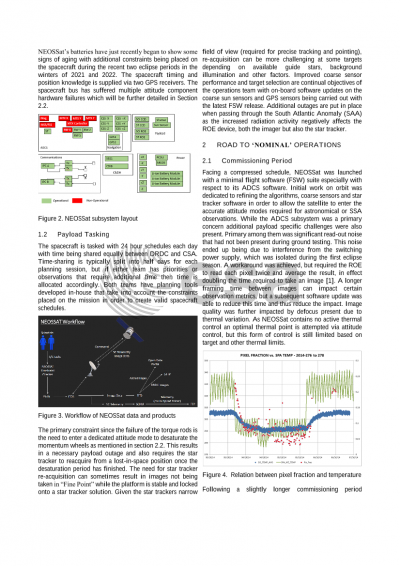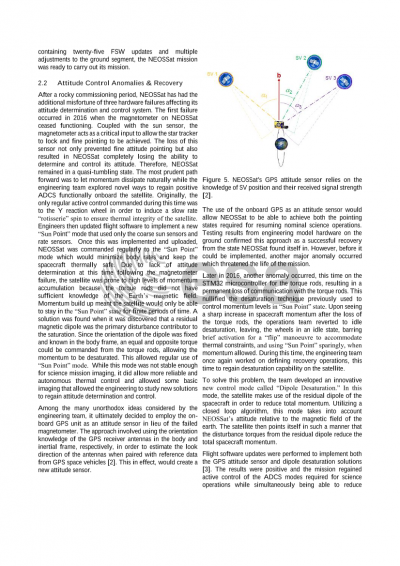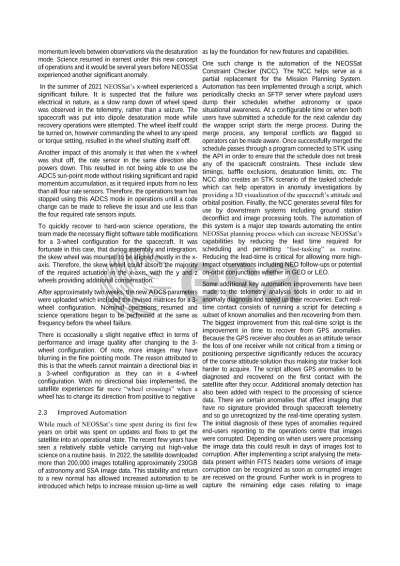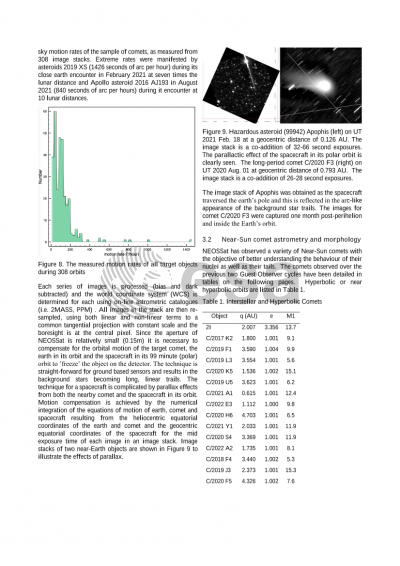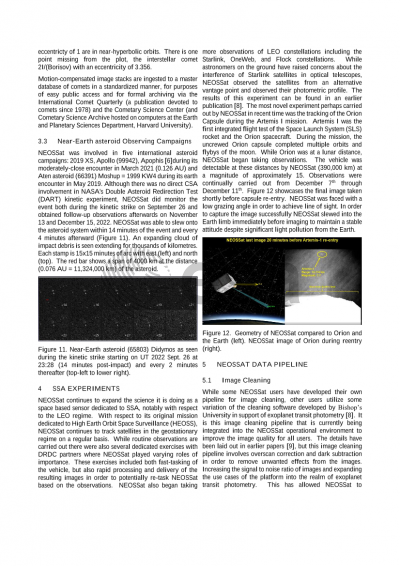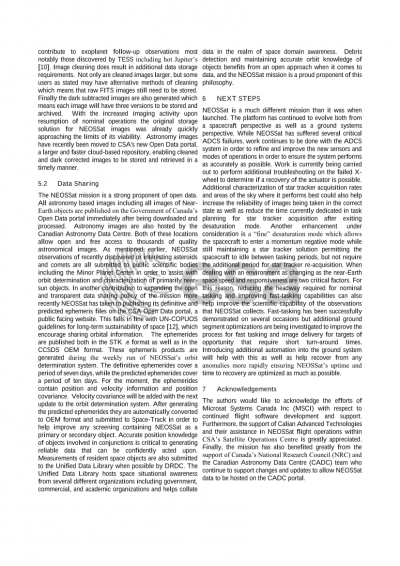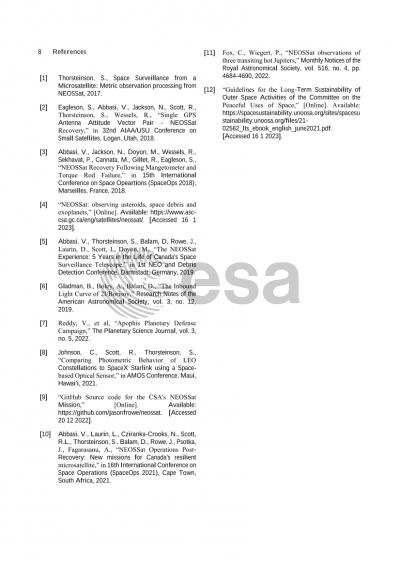Document details
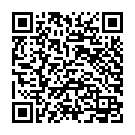
Abstract
Canada’s Near-Earth Object Surveillance Satellite (NEOSSat) is a joint mission operated by the Canadian Space Agency (CSA) and Defence R&D Canada (DRDC). Over nearly 10 years on orbit the mission has overcome multiple permanent hardware failures affecting the attitude determination and control subsystem. Having already implemented innovative software updates to reduce the impact of the failure of its magnetometer and torque rods the operations team was again forced to implement a software solution when the latest failure resulted in the loss of a reaction wheel. While overcoming these setbacks the mission has evolved in the type of science being carried out both in Space Situational Awareness (SSA) as well as in the domain of astronomical observations.
The NEOSSat mission routinely performs follow-up observations of recently discovered or unusual near-Earth comets and asteroids and provides observation metrics to the Minor Planet Center. The telescope baffle allows imaging within 40 degrees of the Sun, a region that is typically difficult for ground based telescopes to observe. Observations at even lower solar elongations are possible during NEOSSat's eclipse season where the Earth can act as a secondary baffle. In addition to near-Earth object (NEO) astrometry, NEOSSat is now also successfully supporting photometry applications, including characterization of exoplanet transits and other variable star phenomena.
As for SSA experiments on the platform, they are wide-ranging from continuous monitoring of Canadian high orbiting assets, to observations of different mega-constellations such as Starlink and Kepler, and assessments of self-conjunction objects with NEOSSat itself. These LEO observations are permitted through the capability of NEOSSat to perform track-rate slews at rates up to 220 arc-seconds/s.
While on-board software updates have allowed the mission to recover from anomalies and expand far beyond initial mission requirements, additional ground system updates have improved operational workflow and data accessibility. Ground segment updates have allowed NEOSSat to autonomously contribute data to the Canadian Government’s Open Data portals, permitting any user access to astronomy and ephemeris data.
As NEOSSat enters its tenth year of operations, this paper will summarize the hardware failure recovery and mission extension effort in addition to the recent NEO and SSA scientific activities being carried out using the vehicle. Ground segment enhancements and strategies to further advance NEOSSat science and mission operations will also be shared.
Preview

